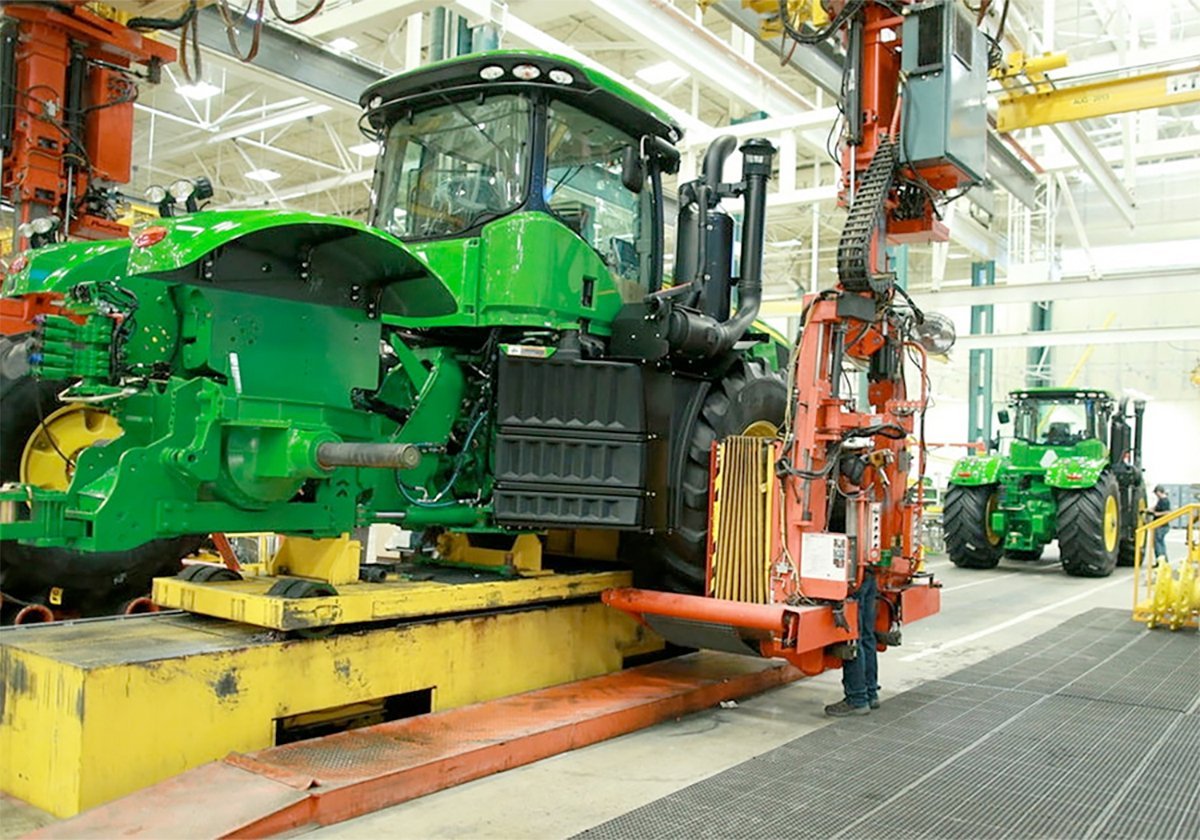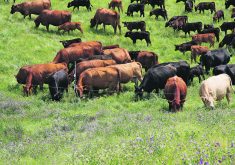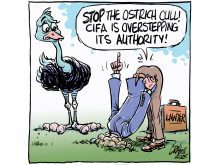Whistle blowers
(It is) one more display of a nation going astray – a law to protect whistle blowers. How is a truckload of legal jargon put together by an assembly with confined biases from Ottawa going to change and/or control the attitude of a fellow worker or employer in Vancouver? How?
What is a whistle blower? I remember two extremely important whistles blowing and warning to those within ear shot. One was the threshing machine engine. This one woke people up and was a signal for the population to prepare for a physically active and productive day’s work.
Read Also

Trump’s trade policies take their toll on Canadian producers
U.S. trade policy as dictated by president Donald Trump is hurting Canadian farmers in a multitude of ways.
The other was a warning that if not heeded could be disastrous. This was the whistle of a railway locomotive and was demanding of immediate and reactive attention.
In neither case did anyone open a book and pay a board of inquiry or do a feasibility study allowing us to be protected from the lurking ineffectiveness and dangers should we heed or refuse to heed the warning.
Do you need permission or protection from anyone if we use good judgment as to whether you should report a shoplifter, a traffic violator, a social abuser, insurance fraud or financial thief?
One of the deciding factors being that my employer, peer or neighbour may not like my decision. Every human has a moral, ethical, financial and legal obligation to oppose corruption, fraud and theft from and against their fellow man.
If the above isn’t enough to blow one’s mind, then we are either apathetic or worse still, brain dead.
– E. O. Oystreck,
Yorkton, Sask.
BSE crisis
I have been in the cow-calf operation for a number of years now and am really disappointed in how the government leaders and the beef associations are dealing with the crisis facing our industry.
All they can think of doing is running to the United States every two months to see if they cannot convince them to open the border. It seems to me that if they haven’t gained that in six months, they are probably wasting their time and effort as well as taxpayers’ money.
Perhaps government officials and beef associations should be spending more time and resources in packing plants and seeing if they can’t get other countries like Japan to buy Canada’s beef. Figuring out some way to get Canadian beef to Mexico wouldn’t be such a bad idea either.
And as far as government assistance goes, the government leaders seem to have forgotten that there are cow-calf producers in this country. They have lots of money to give the packing plants and feedlots.
However, I would have to ask the question: where would the packing plants and feedlot operators be if there were no calves to buy and finish? Well, without some government assistance, there will be no more cow-calf producers. (Saskatchewan premier Lorne) Calvert said he has already spent $60 million on BSE and he was not going to spend any more.
You can ask any cow-calf producer if he received any government money, except loans from the government and I think your answer will be no. So if he did truly spend that kind of money, the vast majority of it must have gone out in the form of loans or payouts to packing plants and feedlots….
And suppose government officials and beef associations are successful in getting the border open, there is still no guarantee what our meat will be worth. As you must have heard the Americans say, if other countries still do not want Canadian beef they may have to process it, box it and sell it separately. … Ultimately, the Canadian producers will have to take a lower price for their meat and the downward spiral will continue for our Canadian farmers.
So the question remains: are the government, the producers and the beef associations going to work together to solve some of these problems?
– Walter Brown,
Carlyle, Sask.
Tag downside
(National identification cattle) tags are not all positive. They are a Pandora’s box.
If only the … cow tags had been removed, (Canada and the United States cattle industries) would be on even ground. We would have the same status and it would be easier to reopen the border.
When United States Department of Agriculture found the tag, the only interest was to pass the buck to Canada. They had no interest in answering the questions who, what, when, where, why and how. At the start the cow was four years old. It wouldn’t fit the theory so they aged it two and one-half years to fit the rendered protein theory.
Recently in Michigan a bull contracted tuberculosis. …The article only mentioned it was a Canadian bull. They were not interested in who, what, when, where, why and how just like Canadian Food Inspection Agency.
– Ted McCaffrey,
Manitou, Man.
Smell a rat
My wife and I have always counted on the Western Producer for unbiased and factual information and for the most part have been very impressed with the way you have covered the current beef crisis. But Barry Wilson’s article on the front page of the March 4 issue leaves us puzzled and angry.
In this article, Mr. Wilson states that “the government continues to block supplementary offshore beef imports.”
I recall reading in a previous issue in February that approximately 80,000 tonnes of beef were imported because of mandatory import quotas and an additional 50,000 tonnes (approximately) were imported under supplementary import permits.
Which is correct?
Also, Mr. Wilson quoted Mr. Scott Zeis as saying that “the Canadian cattlemen … are not committed to the domestic market.” While I sympathize with the dilemma faced by those Mr. Zeis represents, he is pointing the finger in the wrong direction.
Last week I sold a four-year-old 1,400 pound cow which last year would have brought $700 to $900. I received $76.70 before deductions. The argument invariably arises that we, in Canada, do not have enough slaughter facilities to handle older animals and that may be so.
But that does not explain why secondary processors, like those Mr. Zeis represents, are crying for beef because the packers are sending everything down south for a good price and the price for good yearling animals remains severely depressed.
If there is a shortage, one would think that the price paid for young animals, at least, would be reasonable if not high. I smell a rat, and it’s not in my barn.
– Jonathan Kolish,
Mossbank, Sask.
Build plants
We Canadians should be taking the bull by the horns. Pardon the pun. It is obvious that as an exporting nation, we are entirely too dependent on the Americans who in my opinion are protectionists.
Why don’t we build three huge, state-of-the-art packing plants on our western coast? We could test every animal that is slaughtered there for BSE or whatever the demand and cater to the Asian market.
Competition for our superior product would straighten out our prices in a hurry. We would not have to ship any live animals to the States and couldn’t raise enough to supply Asian markets.
It would make more sense to ship finished animals from feedlots in Western Canada to our west coast by rail than to ship feeder cattle south (if our borders were open) by truck.
We are just letting ourselves be pushed around by the Americans who are, by owning our huge packing plants, stealing our very life away.
Just think how healthy our agricultural sector would be if we could and would do something along this line.
If Canada’s cheap food policy is the only thing standing in the way of something like this, then I think the West should be ready to separate. If our leaders in Ottawa can easily write a cheque worth billions of dollars to Bombardier, gun control and who knows what else, I am sure they could justify three federally owned and operated packing plants to stabilize our western economy.
If Mr. Martin and Mr. Speller want votes and seats in the West, they had better sit up and pay attention.
A healthy beef industry will dramatically impact the hog, chicken and grain sectors of agriculture. …
– Leon Stand,
Cactus Lake, Sask.














